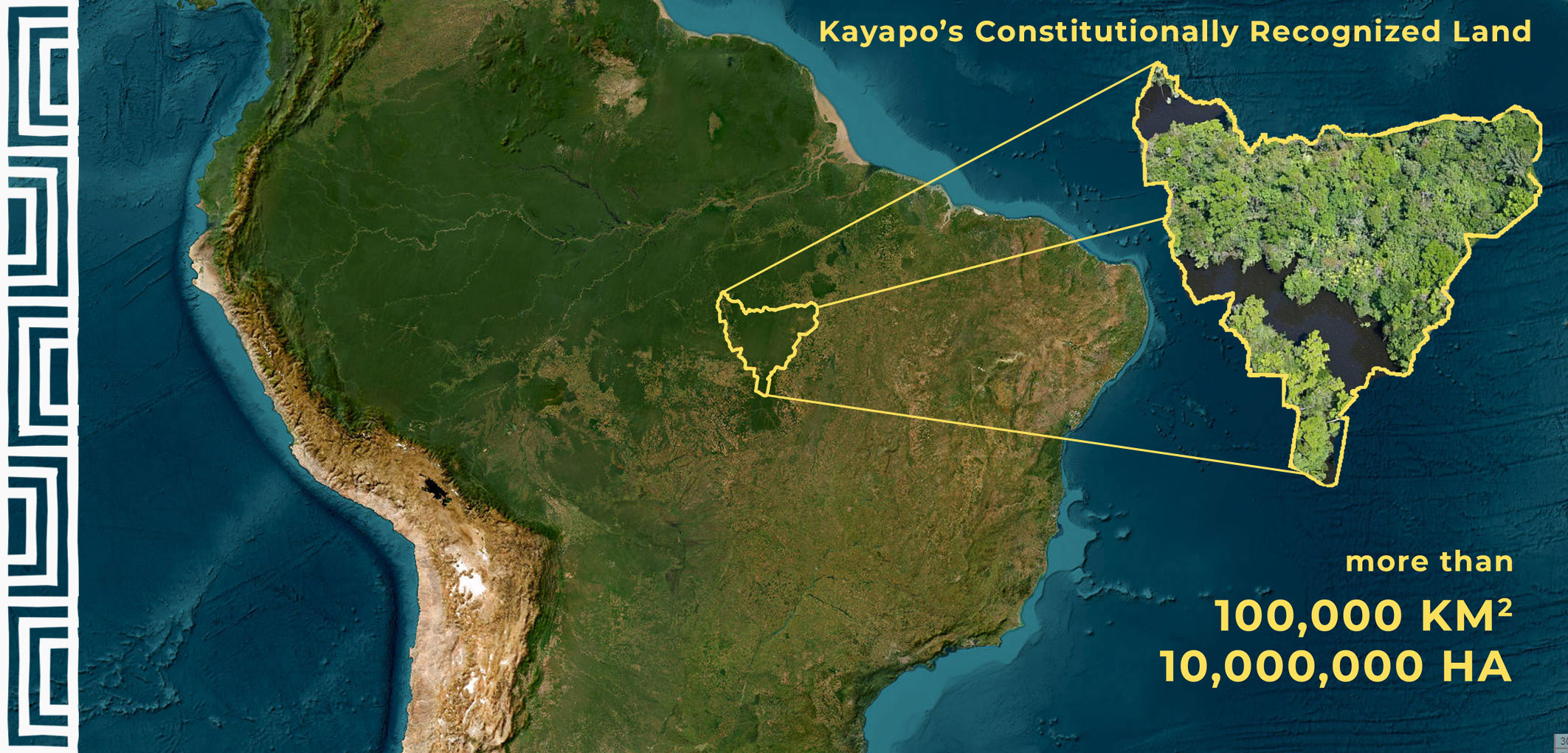
Guardians of the rainforest
In South East Amazonia, right at the front-lines deforestation lays a huge area of pristine rainforest guarded by the Kayapo. Their lands conserve the last remaining large, intact block of native forest in the southeastern Amazon, and maintain the connectivity of this ecoregion with the western Amazon. They confer incalculable benefits to protection of biodiversity, mitigation of climate change and preservation of the crucial role of Amazonian forests in producing rainfall over a much larger geographic scale.
Against all odds, these Indigenous Peoples have managed to secure, constitutionally recognized, territorial rights over their vast ancestral land.
imagine a wilderness
larger than many countries around the world
It’s difficult to comprehend the vastness of the Kayapo indigenous territory. Spanning 100,000 square kilometers, it surpasses the size of many countries worldwide. If considered a country, it would rank approximately 90-95 in the world, surpassing both Hungary and Portugal in size. Imagine this immense expanse as a nearly untouched wilderness, with a small area of natural cerrado savanna to the south and an expansive tropical rainforest stretching beyond the limits of one’s imagination.

The border of industrial development

Photo: Simone Giovine
A small section of the 2200km border of Kayapo’s indigenous territory. Within the 10 million hectares of Kayapo land, a lush rainforest continues to flourish as it did for millennia. Outside of Kayapo’s borders, the trees have been cut, burned and the land was turned into pastures and soy fields.

Photo: Simone Giovine
A small section of the 2200km border of Kayapo’s indigenous territory. Within the 10 million hectares of Kayapo land, a lush rainforest continues to flourish as it did for millennia. Outside of Kayapo’s borders, the trees have been cut, burned and the land was turned into pastures and soy fields.
Kayapo’s ancestral territory finds itself increasingly hemmed in by encroaching industrial development. The relentless march of agricultural expansion now presses right up to the borders of their indigenous land, as vividly illustrated by the map below.

Satellite image of Kayapo lands and most of the Xingu Indigenous Park (to the south) showing plumes of smoke rising from burning of primary forest remnants outside of the Indigenous Territories. Dark green areas are indigenous lands and light brown areas are ranch and agricultural land.

A land of water
The Kayapo people refer to themselves as “Mebengokre” in their native language, which roughly translates to “the people of the big water”. Kayapo’s territory is located on the Central Brazilian plateau, a region characterized by numerous river valleys and small hills. The area is marked by large rivers that are fed by countless pools and creeks.
The mighty Xingu river and its main tributary, the Iriri river flow undisturbed through Kayapo’s indigenous land. Their waters are teeming with life and provide the Kayapo with their main source of protein. The ecological importance of the Xingu and Iriri rivers cannot be overstated, as these rivers harbor a diverse array of fish and other aquatic animals. Seasonal fluctuations in their levels flood the soil of the rainforest with mineral-rich sediments, fertilizing the land and providing sustenance for the rich fauna of the region.
Rainy Weather
In Central Brazil, the year divides into two seasons: the dry season (‘winter’), which extends from May to October, and the rainy season (‘summer’), which runs from November to April. The dry season is characterized by hot and windy days, cool nights and the almost total absence of mosquitoes. This is certainly the most pleasant time of year and the Kayapo often refer to it as ‘good weather.’ In contrast, the rainy season is characterized by torrential rains, the inundation of most of the rivers and creeks and by the annoying presence of a large number of mosquitoes and other types of insects. When evoking this time of year, the Kayapo refer to it simply as ‘rainy weather.’
The annual rainfall index is sizeable, varying between 1,900 mm in the north-east of the territory, and about 2,500 mm in the south-east – to give an idea, Belgium, often taken to be a rainy country, has an annual rainfall index of approximately 1,000 mm. Source : Gustaaf Verswijver
The guard post program plays a crucial role in safeguarding the indigenous territory of the Kayapo people.
The guard post program plays a crucial role in safeguarding the indigenous territory of the Kayapo people.







